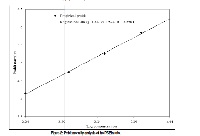Toxic Effects of Sapium indicum (Willd.) Fruits on Animal Model
Keywords:
Sapium indicum (Willd.), toxic response, mice, rat, 24-hr LD50, bio-pesticideAbstract
The present study deals with toxic effects of petroleum ether (40°-60°C) and water-soluble alcoholic extracts of the fruits of Sapium indicum (Willd.) on laboratory animal model. The petroleum ether (40°-60°C) extract administered through intravenous route in mice, and through oral routes in rats exhibited toxic effects. The 24-hr LD50 value of the extract was found as 816.58 µg.kg-1 and 208.93 mg.kg-1 body weight in mice and rats, respectively. On the other hand, the experimental rats treated orally with the water-soluble alcoholic extract exhibited no mortality. The results revealed that the petroleum ether (40°-60°C) extract of the fruit is more toxic than organochlorine compounds having a prospect of using it as an alternative source of bio-pesticides.
References
Ghani A. Medicinal plants of Bangladesh: Chemical constituents and uses. Dhaka, Bangladesh: Asiatic Society of Bangladesh, 1998.
Burkill IH. A dictionary of the economic products of the Malay Peninsula. London, UK: Crown Agents for the Colonies, 1935.
Chopra RN, Badhwar RL, Gosh S. Poisonous Plants of India. New Delhi, India: Indian Council of Agricultural Research, 1940.
Giesen W, Wulffraat S, Zieren M, Scholten L. Mangrove guidebook for Southeast Asia. Bangkok, Thailand: Food and Agriculture Organization of the United Nations, Regional Office for Asia and the Pacific, 2006.
Fürstenberger G, Hecker E. The new diterpene 4-deoxyphorbol and its highly unsaturated irritant diesters. Tetrahedron Lett. 1977;18(11):925-28 doi: 10.1016/S0040-4039(01)92793-5.
Miana GA, Schmidt R, Hecker E, Shamma M, Moniot JL, Kiamuddin M. 4α-Sapinine, a novel diterpene ester from Sapium indicum. Z Naturforsch. 1977;32b:727-28.
Kiamuddin M, Hussain MG, Haque ME. Chemical studies of Sapium indicum. Bangladesh J Sci Ind Res. 1979;14(3-4):321-24
Taylor SE, Gafur MA, Choudhury AK, Evans FJ. Sapintoxin A, a new biologically active nitrogen containing phorbol ester. Experientia. 1981;37(7):681-2
Taylor SE, Gafur MA, Choudhury AK, Evans FJ. 4-deoxyphorbol and 4α-deoxyphorbol aldehydes, new diterpenes and their esters. Tetrahedron Lett. 1981;22(34):3321-24 doi: 10.1016/S0040-4039(01)81895-5.
Taylor SE, Gafur MA, Choudhury AK, Evans FJ. Nitrogen containing phorbol derivatives of Sapium indicum. Phytochemistry. 1981;20(12):2749-51 doi: 10.1016/0031-9422(81)85279-X.
Taylor SE, Gafur MA, Choudhury AK, Evans FJ. Sapatoxins, aliphatic ester tigliane diterpenes from Sapium indicum. Phytochemistry. 1982;21(2):405-07 doi: 10.1016/S0031-9422(00)95276-2.
Chumkaew P, Karalai C, Ponglimanont C, Chantrapromma K. Antimycobacterial activity of phorbol esters from the fruits of Sapium indicum. J Nat Prod. 2003;66(4):540-3 doi: 10.1021/np0204489.
Hossain ME, Islam ME, Mostafa M, Dey SK, Chowdhury MM. Chemical investigation on oil from Sapium indicum seed. Bangladesh J Sci Ind Res. 2003; 38(3-4):231-36
Silprasit K, Seetaha S, Pongsanarakul P, Hannongbua S, Choowongkomon K. Anti-HIV-1 reverse transcriptase activities of hexane extracts from some Asian medicinal plants. J Med Plants Res. 2011;5(17):4194–201
Khanam LAM, Khan AR, Khalequzzaman M, Rahman SM. Effect of Sapium indicum, Thevetia neriifolia and Jatropha gossypifolia seed extract on the fecundity and fertility of Tribolium castaneum and Tribolium confusum. Bangladesh J Sci Ind Res. 2008;43(1):55-66
Khalil MI. Study on the piscicidal property of the indigenous Sapium indicum fruits (Fam. Euphorbiaceae). University of Dhaka, 1984.
Chowdhury R. Piscicidal effects of some indigenous plant extracts on H. fossilis (Bloch) and A. testudineus (Bloch). University of Chittagong, 1996.
Sharma KP, Simlot MM. Piscicidal effects of temru Diospyros cordifolia Roxb. J Inland Fish Soc India. 1971;3(1):57-62.
Turner RA. Screening Methods in Pharmacology. New York, USA: Academic Press Inc, 1969.
Irwin S. General philosophy and methodology of screening: a multi-dimensional approach. Gordon Research Conference on Medicinal Chemistry; 1959; August 3–7, 1959, at Colby Colby-Sawyer College, New London.
Finney DJ. Probit Analysis. 3rd ed. London, UK: Cambridge University Press, 1971.
Whishaw IQ, Haun F, Kolb B. Analysis of behavior in laboratory rodents. In: Windhorst U, Johansson H, eds. Modern Techniques in Neuroscience. Berlin, Germany: Springer-Verlag, 1999:1243–75.
Gafur MA, Alam MN, Choudhury AK, Chowdhury SA, Haque A. Toxicological profile of juice from the fruits of Sapium indicum. Bangladesh Pharmacol J. 1978;7(3):11-14.
Schmidt RJ, Evans FJ. Skin irritant effects of esters of phorbol and related polyols. Arch Toxicol. 1980;44(4):279-89.
Norhtover AM, Northover BJ, Ryves WJ, Evans FJ. Sapintoxin A and phorbol 12, 13-dibutyrate: two phorbol derivatives with contrasting effects on rat blood vessel permeability in-vitro. J Pharm Pharmacol. 1995;47(1):30-33 doi: 10.1111/j.2042-7158.1995.tb05729.x.
Dey M, Harborne JB. Plant Biochemistry. 1st ed. London, UK: Academic Press, 1997.
Evans FJ, Edwards MC. Activity correlations in the phorbol ester series. Bot J Linn Soc. 1987;94(1-2):231–46 doi: 10.1111/j.1095-8339.1987.tb01048.x.
Adam SE. Toxic effects of Jatropha curcas in mice. Toxicology. 1974;2(1):67-76
Spencer PS, Schaumburg HH. Experimental and Clinical Neurotoxicology. 2nd ed. New York, USA: Oxford University Press, 2000.
Ray DE, Fry JR. A reassessment of the neurotoxicity of pyrethroid insecticides. Pharmacol Ther. 2006;111(1):174-93 doi: 10.1016/j.pharmthera.2005.10.003.
Gallo MA, Lawryk NJ. Organic phosphorus pesticides. In: Hayes WJ, Laws ER, eds. Handbook of Pesticide Toxicology. San Diego, USA: Academic Press, 1991:917–1123.
Lotti M. Organophosphorus compounds. In: Spencer PS, Schaumburg HH, Ludolph AC, eds. Experimental and Clinical Neurotoxicology. Oxford, UK: Oxford University Press, 2000:898–925.
Gaines TB. Acute toxicity of pesticides. Toxicol Appl Pharm. 1969;14(3):515-34. doi: 10.1016/0041-008X(69)90013-1.



